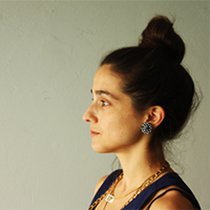3D Printing in the Circular City explores the potential to provide an innovative way to reduce the municipal waste volume through recycling household plastics waste, locally with large scale 3D-printing.
The design failure of plastics
“Plastic packaging has a major design failure”, claim the lead researchers in the project Panos Sakkas and Foteini Setaki, founders of The New Raw and researchers in the project 3D Printing in the Circular City at AMS Institute. “In most cases, it is used a single time, before throwing it in the trash. This results in the fact that 24,5% the municipal waste in Amsterdam is plastic”.
Panos and Foteini strongly believe that the design failure in plastic packaging can be solved by reinventing, redesigning, and reimaging the material cycle itself. The current “make-take-dispose” economy is no longer sustainable. By managing plastic as a cycle, rather than the conventional linear supply chain, it is possible to create a spiral material loop which will constantly be fed with the plastic waste of cities.
New applications for recycled plastics
The project 3D Printing in the Circular City explored circular possibilities to expand the applications of recycled plastic. Studying how to turn plastic waste into a strong printing material was a major part of the research. Local plastic waste streams are examined and assessed to define their utilization patterns and recycling potential. The researchers tested a selection of materials in the laboratories of TU Delft to assess their mechanical properties. Plastics with the right mechanical properties are recycled into a material engineered specifically for 3d printing.
Flexible, personal and on demand design for public space
Moreover, Panos and Foteini worked on designing 3D printed furniture for in public space, with participation of local communities and residents. This way, 3D printing enables (1) local production, (2) local recycling and (3) local participation in the design process. The furniture can be easily repaired and upgraded. They are recycled locally and used again to produce new designs.
The 3D printed bench weighs approximately 50 kilos, which is almost equal to 1,5 times the plastic waste produced by an Amsterdammer in one year. Based on these numbers we could yearly produce 650.000 benches in Amsterdam. Yet, the possibilities for applications and designs with printing from recycled plastics are endless. 3D Printing in the Circular City provides a platform for the city of Amsterdam to locally build a unique public space, created from its own plastic waste, in collaboration with its own residents.
The benches were printed at Actual. Together with the other partners in the main project, AEB and TU Delft, AMS Institute is currently looking for ways to improve the process of waste collection on a neighbourhood level and exploring possibilities to co-create objects for the public space, together with residents.
“The 3D printed bench weighs approximately 50 kilos, which is almost equal to 1,5 times the plastic waste produced by an Amsterdammer in one year.”
Foteini Setaki
Researcher & Co-founder
Why a Circular City?
If we want more resilient, future-proof cities, it is very important to build our future on models that limit the extraction of raw materials and the production of waste. In Circular Cities, resources that drive human activities are by definition regenerative rather than linear or degenerative: be it energy, water, materials, nutrients or clean air. Meaning the focus shifts from gradual destruction of resource-value – “take, make, waste” – to value-creation through models based on cascades and cycles. The definition that circular cities are cities that understand, establish, monitor and control circular economy principles in an urban context, whilst realizing the vision of a resilient, future-proof city.
This project is an AMS Stimulus Project. The aim of Stimulus Projects is to give to new and existing AMS partners support to innovative research that has a strong upscaling potential. The projects should realize short-term research output, which act as a catalyst of a new solution direction, concept or approach.
| Duration: |
|
| Related Information: |
| In the news: |
Project members
Partners






